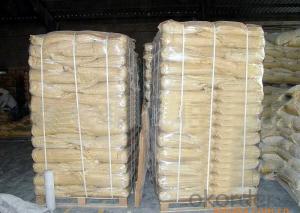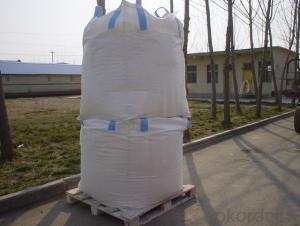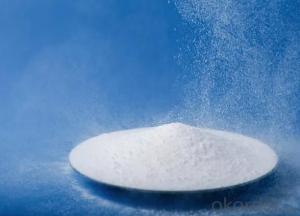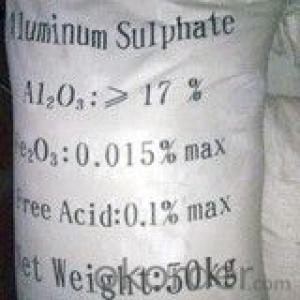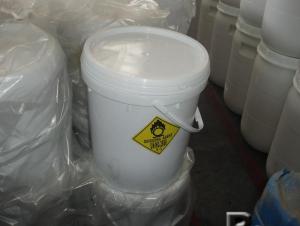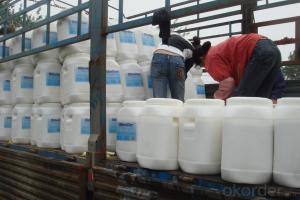Rubber Chemcials Rubber Antioxidant 4010NA
- Loading Port:
- Tianjin
- Payment Terms:
- TT OR LC
- Min Order Qty:
- 25 m.t.
- Supply Capability:
- 12000 m.t./month
OKorder Service Pledge
OKorder Financial Service
You Might Also Like
IPPD 4010NA
Chemical Name:N-isopropyl-N'-phenyl-p-phenylenediamine
Molecular Formula:C15H18N2
Molecular Weight:226.32
CAS NO.:101-72-4
Executive standard:GB/T8828-2003
Specification:
| Index |
| |
Appearance: |
|
Soften Point, ℃≥ | 70.0 |
Loss on drying,% ≤ | 0.30 |
Ash,% ≤ | 0.20 |
Assay(GC),% ≥ | 95.0 |
Properties: Dark brown to purple brown granules. density of 1.14 soluble oils, benzene, ethyl acetate, carbon disulfide and ethanol, gasoline South soluble, not water soluble. Provides powerful and antioxidant properties with excellent high temperature and flex resistance to rubber compounds.
Applications: include the use in pneumatic, an antioxidant for natural rubber and many kinds of synthetic rubber, especially for the prevention of thermal deterioration on NBR. These goods can be used in heated vessels and the Torrid Zone.
Packing :Packed in 20kg or 25kg per bags.
Properties: The product should be stored in the dry and cooling place with good ventilation. The product should be avoid hot sunshine.
- Q:An important property of the catalyst is that the reaction equilibrium is not changed while increasing the forward reaction rate and the reverse reaction rate. However, because the enzyme for the specificity of the substrate, is not almost every reaction by the enzyme are one way to do it.
- Only answer lz, the last question and. The reason is that both the restriction endonuclease and the ligase are required for certain reaction conditions and the reaction substrate. And the reaction conditions are different, so that the final results are different, of course, the enzyme is relatively speaking is not so high, perhaps the destruction is always stronger than the building it. The ligase is the need for a specific substrate, three distilled water, temperature, time (long time do not forget the formula) to control, it may have a certain proportion of connection. So this is two questions.
- Q:Is there a catalyst in the chemical shop?
- If it is like vanadium pentoxide, which catalyzes sulfur dioxide, do not sell it because vanadium is highly toxic and most of the catalyst is expensive
- Q:On the issue of chemical balance and catalyst
- If the chemical equilibrium does not move, then only the catalyst can change the time to reach equilibrium. If you change the temperature, pressure, it will affect the chemical balance.
- Q:How are a catalyst and an intermediate similar? How are they different?
- A catalyst speeds up the rate of a reaction by lowering the activation energy barrier which is, presumably, the energy required to achieve the reaction intermediate. Catalysts are also not consumed in the reaction, they are regenerated towards the end. A reaction intermediate is a configuration that a molecule takes prior to achieving it's lowest energy form which would signify the end of the reaction. Intermediate usually are hard to isolate because of the incentive to go to the most stable configuration. How are they different? A catalyst is not a part of the reaction product and it doesn't get consumed. An intermediate in a reaction is transformed into the product. How are they similar? Well, catalysts drive the reaction and make it easier for the reaction for follow through. Since intermediates are high energy and thermodynamics tells us that low energy is favorable, the incentive for a high energy intermediate to drive down to it's stable for can also drive a reaction. I hope that helps. I hope it makes sense.
- Q:What is the catalyst for industrial aluminum electrolysis?
- 2AlCl3 (melt) = power = 3cl2 + 2al by-product is chlorine
- Q:Write a chemical formula in a chemical laboratory without the use of a catalyst for oxygen
- 2Na2O2 + 2H2O = 4NaOH + O2 ↑
- Q:in acid-catalyzed reaction,there are some books show the acid catalyst as H+ and there are some show it as H3O+ .Are they the same?
- H+ is the ion contained in acids.... When acids are dissolved in water (H+)+(H2O)=H3O+ Both are the same......
- Q:What is the superiority of the catalyst compared to the stoichiometric reagent?
- Efficient: The catalytic efficiency of the enzyme is higher than that of the inorganic catalyst, making the reaction rate faster;
- Q:What is the maximum impact of the chemical reaction rate? Such as catalyst, temperature, concentration. If you can, you can row order.
- But the temperature is greater than the concentration of concentration and pressure on the solid and pure liquid is not affected
- Q:Nitrogen and hydrogen in the role of high temperature and pressure catalyst to generate ammonia chemical equation
- N2 + 3H2 = catalyst, high temperature and high pressure = 2NH3
1. Manufacturer Overview |
|
|---|---|
| Location | |
| Year Established | |
| Annual Output Value | |
| Main Markets | |
| Company Certifications | |
2. Manufacturer Certificates |
|
|---|---|
| a) Certification Name | |
| Range | |
| Reference | |
| Validity Period | |
3. Manufacturer Capability |
|
|---|---|
| a)Trade Capacity | |
| Nearest Port | |
| Export Percentage | |
| No.of Employees in Trade Department | |
| Language Spoken: | |
| b)Factory Information | |
| Factory Size: | |
| No. of Production Lines | |
| Contract Manufacturing | |
| Product Price Range | |
Send your message to us
Rubber Chemcials Rubber Antioxidant 4010NA
- Loading Port:
- Tianjin
- Payment Terms:
- TT OR LC
- Min Order Qty:
- 25 m.t.
- Supply Capability:
- 12000 m.t./month
OKorder Service Pledge
OKorder Financial Service
Similar products
New products
Hot products
Related keywords


